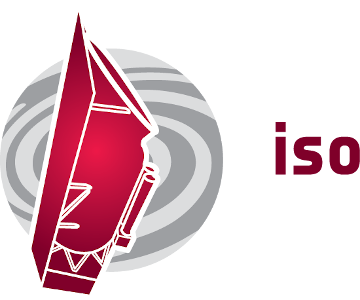| Description |
scientific abstract infrared background radiation carries information from the otherwise unobserv- able dark ages of the universe between the redshifts 4 and 1000, during which e.g. the formation of galaxies has taken place. the sensitivity of isophot is sufficient for its detection both in the near- and the far-ir cosmological windows; as compared with the cobe/dirbe experiment the smaller field of view of isophot (3 vs. 0.7 deg) offers several advantages for the disentanglement of the foreground components,i.e. the zodiacal emission,the galactic starlight and the interstellar cirrus. observation summary 1.mapping at 180 microns (9.62 h): we have chosen 13 fields along an arc from the north ecliptic pole to the plane. mapping with c200 in the 180 micron filter aims at (1)finding the darkest (cirrus-free) spots in each field; (2)establishing an accurate link to the cobe/dirbe measurements and facilitates supressing the remaining cirrus contribution from the dirbe measurements; (3)finding the ebl fluctuations due to faint galaxies. raster mapping, aot p22, 180 arc sec spacing. map sizes, integration times, and s/n for a flux of 1 mjy/sr (after subtraction of a zodiacal foreground of 0.5 mjy/sr): field raster size area int.time s/n total time (frames) (arc.min) (sec) (hours) - - - - - - - - - - - - - - - - - - - - - - - - - - - - - - - - - - - - - - - lockman-hole 15 x 15 45 x 45 32 82 3.14 ngp-hole 15 x 15 45 x 45 16 58 2.14 12 other fields 4 x 12 12 x 36 10 46 4.34 - - - - - - - - - - - - - - - - - - - - - - - - - - - - - - - - - - - - - - - - in the first two maps absolute photometry along one strip will be performed, in addition, in order to bind together the legs of the maps; aot p25, c200, 180 micron filter, 32 sec on-time per position. 2.multicolor-photometry (9.0 h): in order to disentangle the zodiacal emission, photometry is performed in 13 fields along an arc reaching from nep to the ecliptic plane. in each field two 180 areas free of stars and ir-sources have been identified (poss/eso_serc atlas, k-band imaging,iras_issa). improved (=darker) areas will be the result of the 180 micron mapping (sect.1). absolute photometry (aot p05/p25), filters p3.6, p7.3,p11.5, c60, c90, c135, c160, and c180 ,wide-beam, integration time 256 s for p3.6 ,32 s for the other filters. the s/n for the zodiacal light is 18 in the p3.6 filter and >60 for the others. this will enable subtraction of the zodiacal emission with an accuracy of better than 5 per cent, which is equivalent to 0.002 to 0.005 mjy/sr at 3.6 micron and ca. 0.02 mjy/sr at 180 microns. 3. far-ir multicolor photometry of cirrus(1.70 h): the purpose is to measure a template far-ir cirrus spectrum in order to facilitate the subtraction of the residual cirrus contribution from the ebl photometry. a cirrus cloud has been selected (g137+51) close to the ecliptical arc. a strip scan through the cirrus cloud will provide a connection to an ebl field at its other end. (23 positions with 180 spacing, aot p22, filters c60, c90, c135, c160, and c180, integration time 32 sec per position, s/n >50 for an estimated flux of 3mjy/sr for the cirrus) justifications for concatenation: 1. mapping: the 15 x 15 p22 maps and the 15 position p25 strip maps are to be concatenated, because the latter are intended as calibration of the former. 2. multicolor-photometry: it is essential that the areas are measured in all filters at the same time in order to have the same zodiacal emission aspect angles. 3. cirrus photometry: in order to extract the colour information the detector must cover exactly the same area on sky in each filter. since the orientation of the pht-c100 and c200 detectors changes w.r.t. r.a. and decl. this can be realized in practise only through concatenated observations in the different filters. we request linked observations: the maps under sect.1 are to be observed first in order to provide improved cirrus-free positions for the photometry of sect.2. we request fixtime observations for the photometry in in section 2: fixtime is needed for the purpose of getting all photometric positions along the arc from the ecliptic plane to the ecliptic north pole measured closely at the same time (within one orbit). this is necessary for accurate modelling and subtraction of the zodiacal light signal. suitable epochs during which the whole arc is accessible in one orbit are: for autumn launch - - - orbits 165 - 186 for spring launch - - - orbits 180 - 200, 540-550 note that we do not request an exact fixed date, but only that the observing date is the same for all positions along the arc. special remark: in contrast to most other observin |

